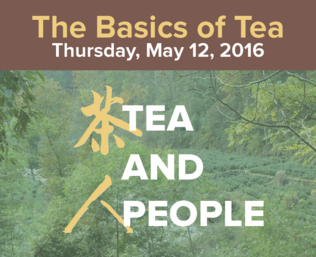- Mapping the Genetic Diversity of Castanea sativa: Exploiting Spatial Analysis for Biogeography and Conservation Studies. Mapping genetic data is both fun and instructive.
- Effects of farmer social status and plant biocultural value on seed circulation networks in Vanuatu. Big Men control Important Plants.
- Diagnostics of Seed-Borne Plant Pathogens for Safe Introduction and Healthy Conservation of Plant Genetic Resources. Genebanks need seed health labs.
- Characterization of Disease Resistance Loci in the USDA Soybean Germplasm Collection using Genome-wide Associations. Phenotypic data in GRIN meets SNP data, hilarity ensues.
- The global expansion of quinoa: trends and limits. From 8 to 75 countries in 35 years. But need new arrangements for access and benefit sharing for genetic resources.
- Evaluation of Vegetative Growth, Yield and Quality Related Traits in Taro (Colocasia esculenta [L.] Schott). A lot of the characters you want to improve are strongly heritable.
Will international tea party include genebanks?
Announcements such as this from UC Davis, of the launch of the Global Tea Initiative, make me wish there was a market for roving agrobiodiversity bloggers and tweeters. Alas, I’m reduced to the usual ploy of asking participants if they’d like to blog the thing for us.

Will genebanks be discussed? There aren’t that many collections around the world, and one of them, in Japan, accounts for 7,500 of the 11,700 accessions WIEWS knows about. And where’s China? Can’t help thinking that’s not altogether healthy. Lots to talk about…
Brainfood: Sesame diversity, Teff & drought, Semen bank, Forest genomic monitoring, Sahiwal cattle status, Genomic prediction, Ecuadorian homegardens, Spinach association mapping, ICRISAT pigeonpea & pearl millet, Women & milpa, African rice at AfricaRice, Bacteria helping wheat
- Analysis of Genetic Diversity and Population Structure of Sesame Accessions from Africa and Asia as Major Centers of Its Cultivation. Strong geographic structure, and more diversity in Asia than Africa.
- Performance of Tef [Eragrostis tef (Zucc.) Trotter] Genotypes for Yield and Yield Components Under Drought-Stressed and Non-Stressed Conditions. Out of 144 genotypes, 15 were good in ideal conditions, 8 under stress, and none, alas, in both cases.
- Genome resource banks pay conservation dividends. Banked semen from “genetically valuable” individuals used to slightly raise diversity in captive populations. Of black-footed ferrets.
- Conservation and Monitoring of Tree Genetic Resources in Temperate Forests. Theory.
- Logging by selective extraction of best trees: Does it change patterns of genetic diversity? The case of Nothofagus pumilio. Praxis: maybe.
- Population structure and demographic trends of the registered Sahiwal cattle in Kenya. It’s losing diversity, so Something Must Be Done.
- Genomic Prediction of Gene Bank Wheat Landraces. It’s not perfect, but not bad either.
- Plant diversity and ecosystem services in Amazonian homegardens of Ecuador. Ethnicity is the stongest determinant of floristic composition.
- Association mapping of leaf traits in spinach (Spinacia oleracea L.). “Five, seven and 14 SNPs were identified to be associated with surface texture, edge shape and petiole colour, respectively.”
- Pre-breeding to expand primary genepool through introgression of genes from wild Cajanus species for pigeonpea improvement. Even the tertiary genepool is interesting.
- Characterization and genetic potential of African pearl millet named landraces conserved at the ICRISAT genebank. 5 agronomic clusters, each with good stuff, but different good stuff.
- The participation of farm women in the milpa system of the Yucatán, Mexico. …is minimal.
- Screening African rice (Oryza glaberrima) for tolerance to abiotic stresses: I. Fe toxicity. 3 out of 2000!
- Alleviation of salt stress by halotolerant and halophilic plant growth-promoting bacteria in wheat (Triticum aestivum). Not by a huge amount. For one wheat variety. In hydroponics.
Nibbles: Bears loose cherry, Swiss cheese birth, Aussie genebank, Palestinian genebank, Wine genebank, Mexican maize, Beer in Israel & Germany
- Bears shit wild cherry seeds in the woods. But uphill.
- The origins of Swiss cheese. And I mean WAY back.
- The Australian Grains Genebank in the news. Well deserved too.
- Likewise the new Palestinian genebank.
- And the Bourgogne grapevine genebank too, since we’re at it.
- Saving popcorn.
- Jesus’ beer recreated. But would it pass the German purity law?
Brainfood: Lupine seeds, Bangladeshi rice, Biscay anchovy, Sweet cassava, Ancient vetches, Salty adzuki, Maroon crops, Mungbean cores, Cassava genome
- Evaluation of thermal, chemical, and mechanical seed scarification methods for 4 Great Basin lupine species. They all need different things.
- Exploring novel genetic sources of salinity tolerance in rice through molecular and physiological characterization. A lot of salt-tolerant Bangladeshi landraces cluster together in an aromatic group close to japonica.
- No loss of genetic diversity in the exploited and recently collapsed population of Bay of Biscay anchovy (Engraulis encrasicolus L.). Effective population size has remained steady, irrespective of census population size.
- Molecular characterization of accessions of a rare genetic resource: sugary cassava (Manihot esculenta Crantz) from Brazilian Amazon. Two distinct genetic groups.
- Presence of vetches (Vicia spp.) in agricultural and wild floras of ancient Europe. One of the proto-IndoEuropean roots for the collective name of these things translates as “avoid”.
- Salt tolerance in wild relatives of adzuki bean, Vigna angularis (Willd.) Ohwi et Ohashi. Two crossable wild relatives had different salt tolerance mechanisms.
- The ‘Botanical Gardens of the Dispossessed’ revisited: richness and significance of Old World crops grown by Suriname Maroons. Some crops are only used in rituals now. But even that’s pretty cool, and better than nothing.
- The AVRDC–The World Vegetable Center mungbean (Vigna radiata) core and mini core collections. 1481 (20% of total) accessions chosen by geography and phenotype, then 289 by SSRs.
- Sequencing wild and cultivated cassava and related species reveals extensive interspecific hybridization and genetic diversity. And you can also use the results for rubber!